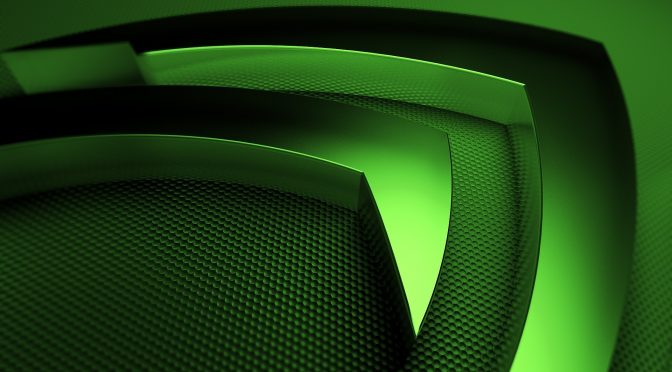A lot has been said these past few days about DLSS. DLSS was meant to improve performance and image quality by utilizing the AI, however its implementation in both Battlefield 5 and Metro Exodus was disappointing. And it appears that NVIDIA has officially commented on everything regarding this new technology.
As Andrew Edelsten, Technical Director of Deep Learning at NVIDIA, claimed, DLSS is designed to boost frame rates at high GPU workloads which is why there are currently specific resolution restrictions.
“DLSS is designed to boost frame rates at high GPU workloads (i.e. when your framerate is low and your GPU is working to its full capacity without bottlenecks or other limitations). If your game is already running at high frame rates, your GPU’s frame rendering time may be shorter than the DLSS execution time. In this case, DLSS is not available because it would not improve your framerate. However, if your game is heavily utilizing the GPU (e.g. FPS is below ~60), DLSS provides an optimal performance boost. You can crank up your settings to maximize your gains. (Note: 60 FPS is an approximation — the exact number varies by game and what graphics settings are enabled)
To put it a bit more technically, DLSS requires a fixed amount of GPU time per frame to run the deep neural network. Thus, games that run at lower frame rates (proportionally less fixed workload) or higher resolutions (greater pixel shading savings), benefit more from DLSS. For games running at high frame rates or low resolutions, DLSS may not boost performance. When your GPU’s frame rendering time is shorter than what it takes to execute the DLSS model, we don’t enable DLSS. We only enable DLSS for cases where you will receive a performance gain. DLSS availability is game-specific, and depends on your GPU and selected display resolution.”
What this ultimately means is that DLSS is not a technique that can universally improve your framerate at every possible resolution. This technique can be only used when the GPU is pushed to its limits and, truth be told, the NVIDIA GeForce RTX2080Ti is CPU-bottlenecked at 1080p even on high-end CPUs. As such, it doesn’t really make sense to enable DLSS in low resolutions (as there wouldn’t be any performance improvement at all). There are exceptions of course in which the NVIDIA GeForce RTX2080Ti can be fully utilized at 1080p, however these are really rare exceptions at the moment.
Here is also what Andrew had to say about the poorly implementation of DLSS in Metro Exodus and Battlefield 5.
“We built DLSS to leverage the Turing architecture’s Tensor Cores and to provide the largest benefit when GPU load is high. To this end, we concentrated on high resolutions during development (where GPU load is highest) with 4K (3840×2160) being the most common training target. Running at 4K is beneficial when it comes to image quality as the number of input pixels is high. Typically for 4K DLSS, we have around 3.5-5.5 million pixels from which to generate the final frame, while at 1920×1080 we only have around 1.0-1.5 million pixels. The less source data, the greater the challenge for DLSS to detect features in the input frame and predict the final frame.
We have seen the screenshots and are listening to the community’s feedback about DLSS at lower resolutions, and are focusing on it as a top priority. We are adding more training data and some new techniques to improve quality, and will continue to train the deep neural network so that it improves over time.”
Lastly, Andrew claims that new updates for both Battlefield 5 and Metro Exodus are planned, though there isn’t yet any ETA on when they will be available.
“For Battlefield V, we think DLSS delivers a big improvement in 4K and 2560×1440 performance — up to 40% — for the corresponding quality, but also hear the community. For the next push, we are focusing our testing and training to improve the image quality at 1920×1080 and also for ultrawide monitors (e.g. 3440×1440). The current experience at these resolutions is not where we want them.
For Metro Exodus, we’ve got an update coming that improves DLSS sharpness and overall image quality across all resolutions that didn’t make it into day of launch. We’re also training DLSS on a larger cross section of the game, and once these updates are ready you will see another increase in quality. Lastly, we are looking into a few other reported issues, such as with HDR, and will update as soon as we have fixes.”

John is the founder and Editor in Chief at DSOGaming. He is a PC gaming fan and highly supports the modding and indie communities. Before creating DSOGaming, John worked on numerous gaming websites. While he is a die-hard PC gamer, his gaming roots can be found on consoles. John loved – and still does – the 16-bit consoles, and considers SNES to be one of the best consoles. Still, the PC platform won him over consoles. That was mainly due to 3DFX and its iconic dedicated 3D accelerator graphics card, Voodoo 2. John has also written a higher degree thesis on the “The Evolution of PC graphics cards.”
Contact: Email

